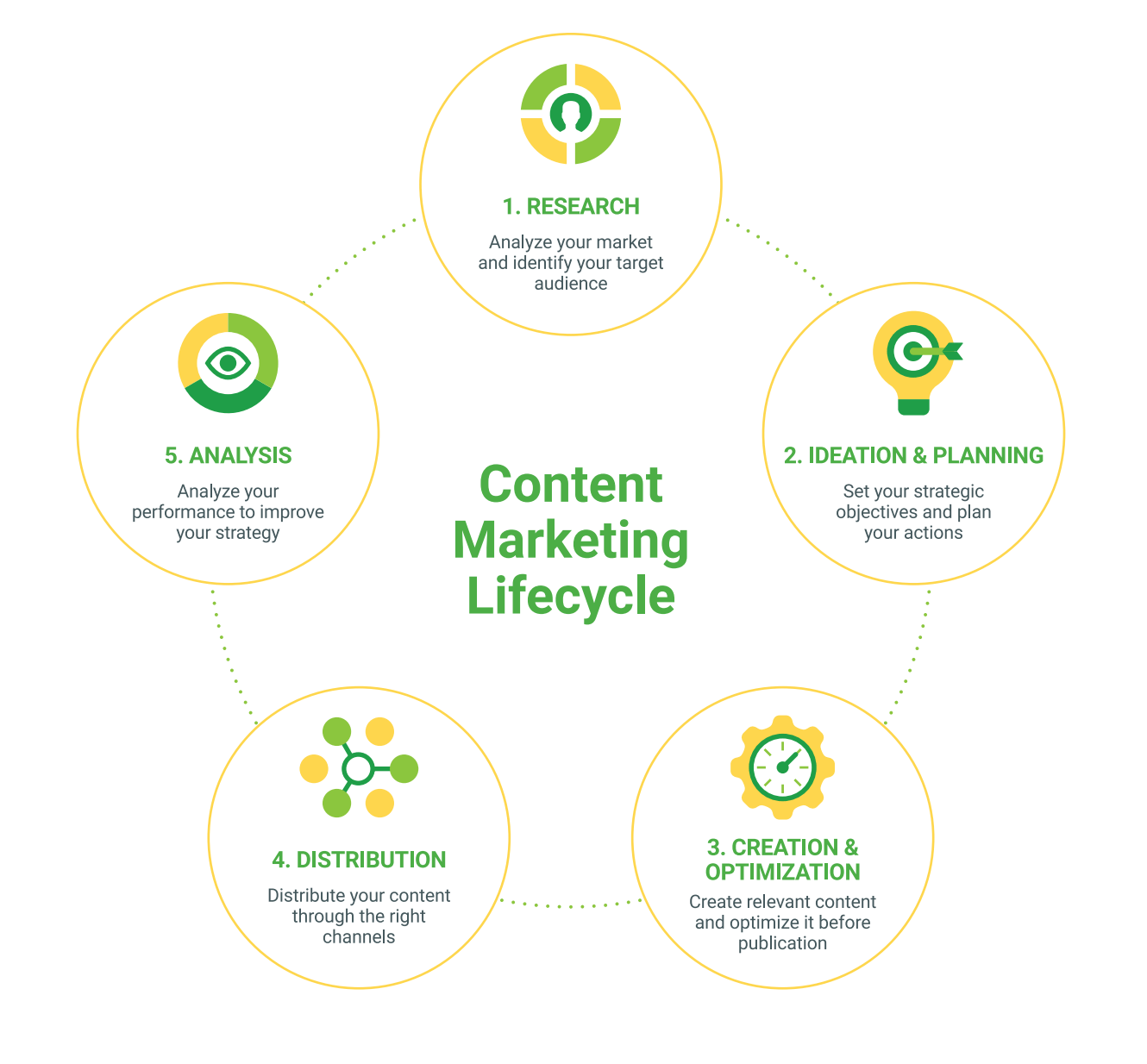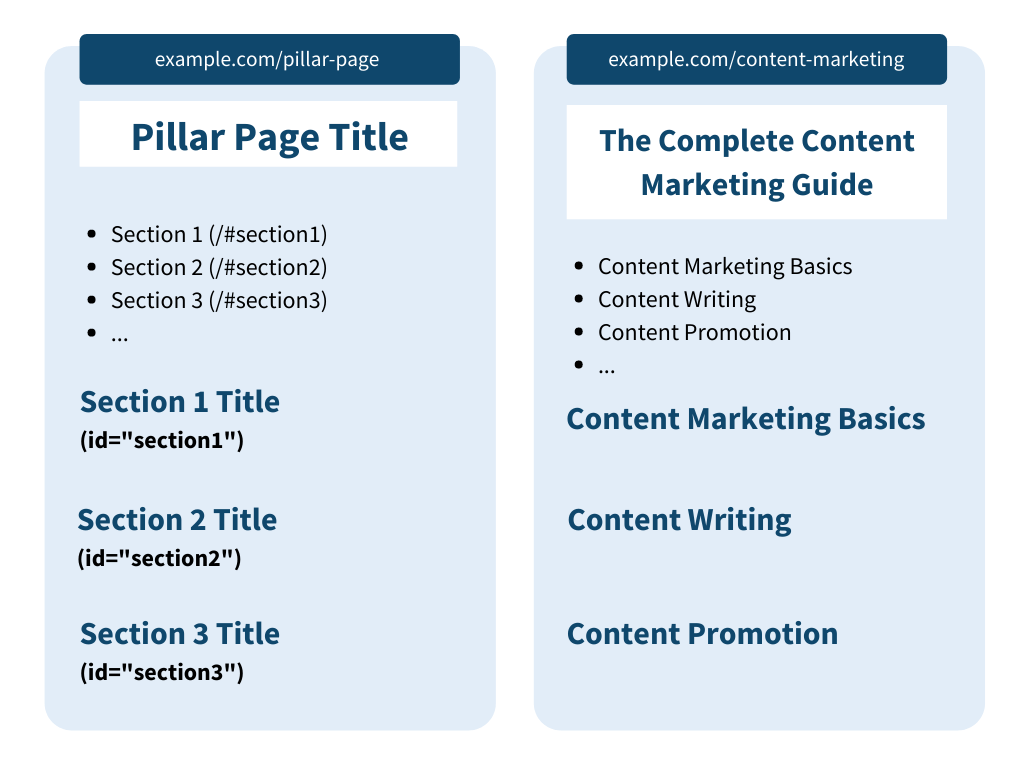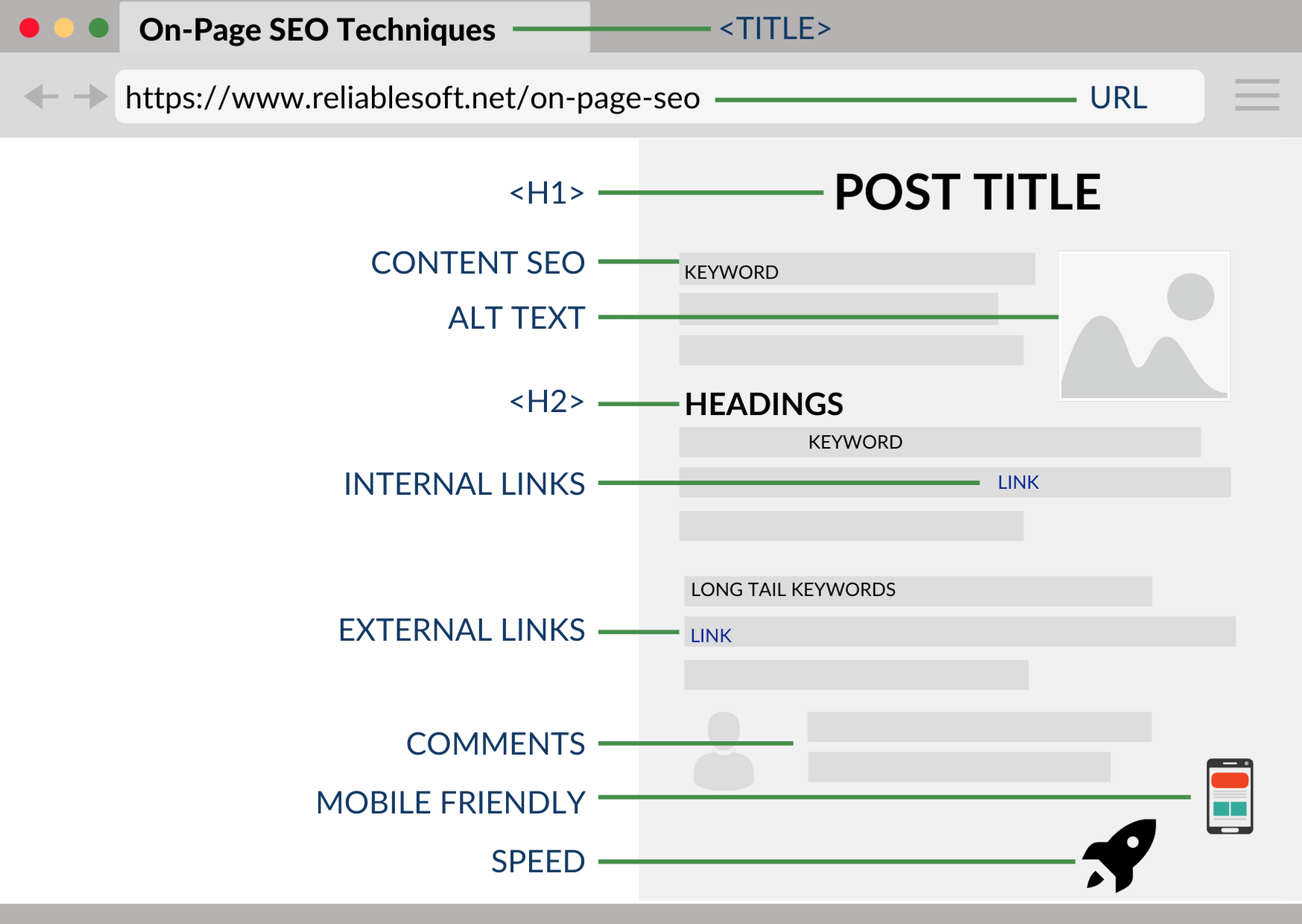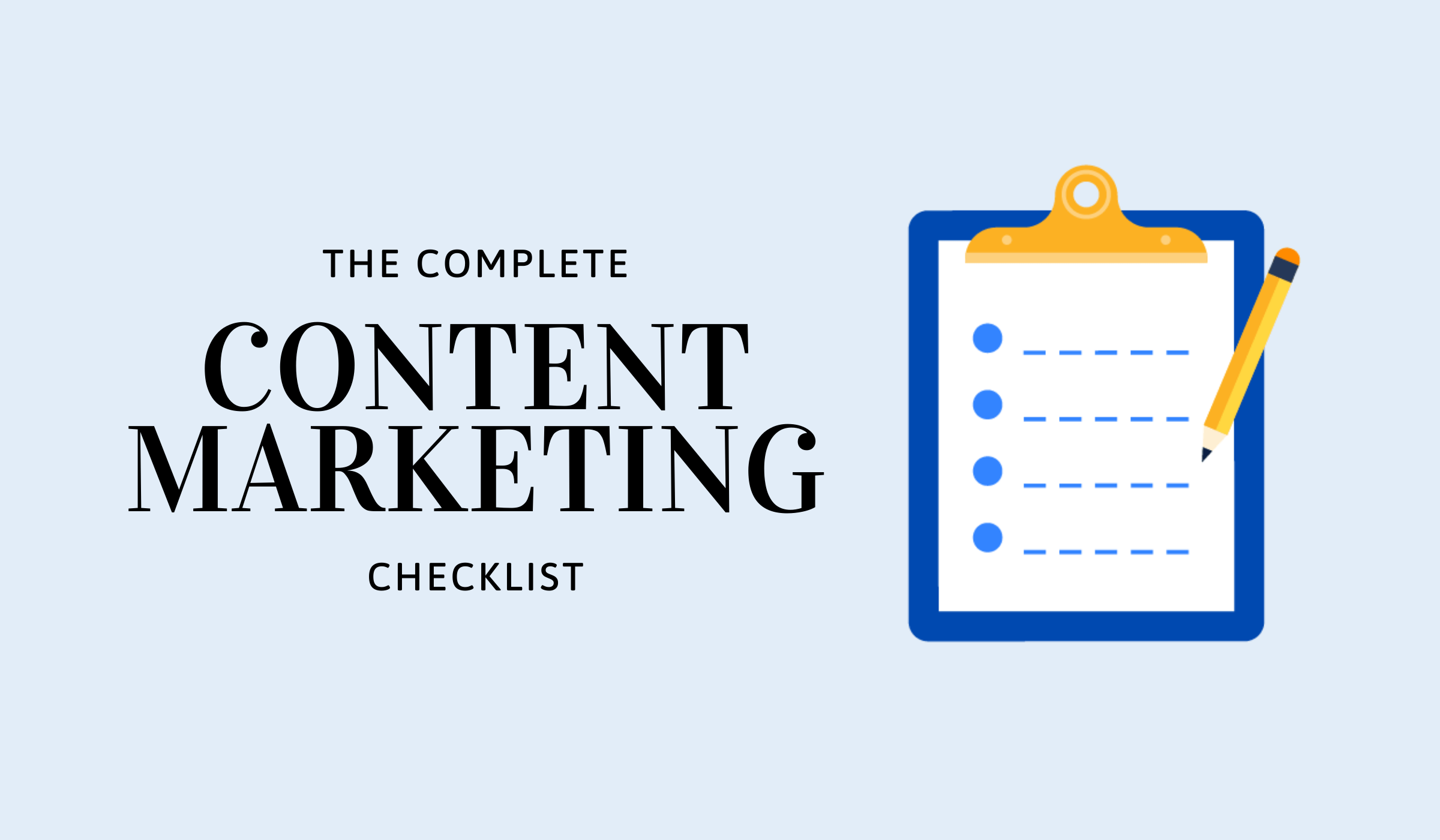Content marketing is one of the most efficient strategies for generating valuable content, increasing organic traffic, getting more leads and engaging with your audience.
The best way to make sure that you’ll execute all required content marketing tasks successfully is to follow a checklist.
That’s why we created The Complete Content Marketing Checklist. Our checklist includes all the important tasks you need to complete to ensure that you are taking full advantage of all the benefits content marketing can offer to your business.
So, if you want to learn how to use content marketing to increase your online visibility, you’ll love this list.
Content Marketing Checklist
To optimize your content marketing campaigns, follow this checklist:
- Understand what is content marketing
- Get to know your audience
- Create a high-level content marketing strategy
- Find Content topic ideas
- Create a content marketing plan
- Create the content (Pillar pages, evergreen articles, linkable assets)
- Optimize content for Search Engines
- Promote your Content
- Learn how to use content marketing tools
- Analyze and monitor the performance of your content marketing campaigns
1. Understand what is content marketing
The first item in your checklist is to make sure that you have a clear idea of what is content marketing and why it’s important for the success of a digital marketing campaign.
Content marketing is the digital marketing process responsible for creating, publishing and promoting the right type of content to the right audience.
The content marketing cycle has 5 main steps:
- Market Research (define your audience)
- Finding content ideas to satisfy the intent of your target audience
- Creating high-quality optimized content
- Promoting the content using the right channels
- Analyzing/Optimizing the performance of your content marketing campaigns

Content marketing is important because:
- It has a greater ROI compared to other marketing methods
- It can tremendously help your SEO efforts
- It’s a great way to increase your site visibility and brand awareness
- It’s good for customer care and support
- It’s the best way to establish an online business
So, before you proceed to the next item in the list, make sure that you understand the basics. The resources below will help you get started.
Resources to Learn More
- What is content marketing and why it’s important – An introduction to content marketing concepts for beginners.
- Best content marketing courses – A list of the best courses to follow and learn content marketing fast.
- Content marketing tips – 15 actionable tips to improve your content marketing
2. Get to know your audience
As mentioned above, content marketing is about creating content for the right audience.
So, the first actionable step is to do your market research and understand your target audience.

At the end of your research, you should have an answer to questions like:
- What kind of content do they like to read?
- What type of questions do they have?
- Which channels do they use to find answers?
- What products can solve their problems?
Then you should analyze their demographic profile (age, gender, location, language, education level, ethnic background) and create different customer personas.
Don’t worry if this sounds complicated, there are tools you can use to help you gather and analyze the information you need.
3. Create a high-level content marketing strategy
Before getting into the process of finding out what kind of content to create and for which topics, it’s important to create a high-level content marketing strategy.
Your strategy can include things like:
- What are your high-level goals (get more visits, make more sales, brand awareness, etc)?
- What content marketing tools to use for doing research (SEMRUSH, Google Analytics, etc)
- What tools to use for creating the content (Word, Google Docs, Grammarly, etc)
- What budget and how much of your own time to allocate on content marketing activities
- How often you will publish new content
- How to measure the effectiveness of your campaigns
- Which channels you should create content for
- What type of content (text, video, audio) you need to publish
- Which tools to use for content promotion
- Who can help you with content creation (freelance writers, people from your team, etc)
Thinking about this information in advance and before starting with the content creation process, will help you A LOT with planning and budgeting.
Don’t forget that content marketing is one of the most expensive and time-consuming digital marketing processes so it is important to think about all parameters before starting the implementation.
4. Find Content topic ideas
The next item in the checklist is to get to know the process of finding what topics/keywords to target with your content.
One of the main goals of content marketing is to create the right kind of content for the right audience. If you start creating content without a purpose, you’ll be wasting your time and money.
When we refer to the ‘right type of content’, we essentially mean:
- Content that your audience wants to consume
- Content that can increase your potential of ranking higher in search engines
- Content that can generate more conversions for your business (email signups, leads, sales)
The good news is that there is a process to help you identify what your audience likes and what topics to target.
To remove this item from your checklist, you should know:
- The process to follow to find which content topic ideas
- A list of keywords to target with the different kinds of content you’ll create
5. Create a content marketing plan
Once all the above checks have been made, the next step is to create a detailed content marketing plan.
Unlike the content marketing strategy that is a high-level plan, this should be an implementation plan with as many details as possible.
I personally use Google calendar for maintaining my content marketing plan but you can use any other tool you want. A lot of people are using Excel and Google Sheets which is perfectly fine.
What is important is to have the right information in your plan and the minimum details are:
- When a piece of content will be published and on what channel (i.e. website, FB, etc)
- The actual title that will be used (Blog post title, Facebook post title, YouTube video title, etc)
- Specify how long the content will be (in words)
- Specify whether the content will be a pillar page, part of a topic cluster or a supporting article
- Clearly define your target keyword, long-tail keywords and LSI keywords that can be used within the texts
- Specify who will write the content
- Specify how the specific content is to be promoted
- When to review the performance and when to update the content
When it comes to SEO and content, you should always have in mind two things:
First, that it may take up to 6 months for a content to rank in its final positions in Google.
Secondly, once a page ranks on Google it has to be updated regularly otherwise it is very likely that it will gradually lose its rankings.
Whenever I publish a post for the first time, I add in my content marketing plan a reminder in 6 months’ time to go back and check the rankings of the particular post.
Depending on the ranking position, I also add a reminder to review and update the content every 3 months. This way I make sure that all my important posts remain relevant and up-to-date.
Having all the above information prepared in advance makes it easier to outsource the content to a freelancer or if you choose to do the writing, it will dramatically speed up the content creation process.
Resources to Learn More
- How often to publish new content – Some guidelines on how often you need to update your website.
- How long to make my blog posts – Advice on how to figure out how many words to make your blog posts
- What are long-tail keywords – A detailed explanation on what are long-tail keywords and how to find them.
6. Create the content (Pillar pages, evergreen articles, linkable assets)

When it comes to content creation, in your checklist you need to make sure that:
- You have a clear understanding of what is a pillar page, what are content clusters and how each type is used and when.
- You know what evergreen content is and why it’s important
- You know the different techniques you can use for creating linkable assets.
Some tips to consider:
- Each piece of content you create is an asset to your website and should be treated accordingly.
- Good content is hard to produce but when done right it can generate millions of visits to your site for years.
- Don’t sacrifice quality for quantity. Successful websites are those that manage to create A LOT of great content.
- Create content for your target audience and not for your own prestige. For example, it’s easy for me to create content to impress my SEO colleagues but this should not help my target audience that is beginners to SEO and digital marketing.
7. Optimize content for Search Engines

This is a critical check in the content marketing checklist. Before publishing a piece of content that is intended for search engines, you need to make sure that it is SEO optimized.
SEO optimization does not make content less attractive to users, on the contrary, SEO friendly content is better for both search engines and users.
Some essential checks to make:
- Optimize your post titles and make sure that they include your target keywords
- Check that your post title is unique and is not the same as one of the titles that already appear on the first page of Google
- Make sure that your URL is short and includes your target keyword
- Check that on your page you have only one H1 tag and this is the same or similar to the page title
- Check and make sure that you have several headings in your text and these are formatted as H2 and H3 and include related keywords
- Make sure that your text content is easy to read (small paragraphs)
- Make sure that all your images have a relevant ALT Text
- Make sure that the relevant schema is added to the post and that is optimized for sitelinks and featured snippets
Resources to Learn More
- SEO Checklist – The ultimate SEO Checklist
- On-Page SEO techniques – On-page SEO techniques for higher rankings.
- SEO Blog writing – How to master the art of writing for both SEO and users
8. Promote your Content
This is the final step in the content marketing process but it is NOT optional. Without properly promoting your content, you minimize your chances of getting any returns from it.
- For a page to rank higher on Google, it needs backlinks from other websites.
- For a post to go viral on social media it needs the help of influencers.
- For a post to generate leads and sales, it has to be promoted to the right audience.
Here is your content promotion checklist:
- Promote the content to your email subscribers (send out a newsletter)
- Post the content multiple times on your social media pages
- Connect with websites/bloggers mentioned in your content (for this step to work, you need to strategically link to other websites/bloggers and let them know about it)
- Promote your content using paid advertising on various social platforms (Facebook, Twitter, Pinterest, LinkedIn, etc)
- Promote the content by adding internal links from other posts on your site (including your homepage)
Content Promotion methods – The 10 most effective ways to promote your content
9. Learn how to use content marketing tools
Content marketing is a process that cannot be executed successfully without the use of tools.
You need tools to find which topics to target, you need tools for keyword research and you need tools to measure the effectiveness of your content marketing campaigns.
So, you need to make sure that you acquire the necessary knowledge to work with the tools of your choice to run successful content marketing campaigns.
Tools that can help you with content marketing are:
- SEMRUSH – for topic and keyword research, content audits, content creation and more.
- Aherfs – an alternative to SEMRUSH
- Google Analytics – for monitoring the performance of your content
- Google Search Console – for monitoring the Google rankings of your content
- Google Trends – for topic research
- Google keyword tool – for keyword research
- Google Data Studio – for reporting and analysis
- Grammarly – for improving the grammar and spelling of your text content
10. Analyze and monitor the performance of your content marketing campaigns
It’s not enough to publish content with the hope that it will generate the expected results. You need to constantly monitor the performance of your campaigns using various metrics.
The most common metrics to monitor are:
- Number of website and number of page views
- Bounce rate (for website content)
- Number of email signups
- Number of leads/sales
- Number of likes, shares, and comments
- Number of unique visits from social media networks
- Video Views (for video content)
- Rankings (for which exact keywords and at what positions it appears on Google)
- Number of backlinks
It is highly recommended to create a spreadsheet and have all the information in one place. By doing so you can easily find out what type of content works better than others and adjust your content marketing plan accordingly. Also, it will be much easier to perform content audits and remove content that does not perform well in search or any other channel.
Resources to Learn More
- What are page views – An explanation on how to accurately measure page views in Google Analytics
- What is bounce rate – how to measure the bounce rate of a page and the steps to follow to improve it
- Google analytics reports – Best reports to use for analyzing your website’s performance
Key Learnings
A checklist can help you execute all the tasks needed to run successful content marketing campaigns.
My recommendation is to follow the steps in the order outlined above and not to skip any of the planning items (items 2,3 and 5). Good planning can help you tremendously during the implementation phase of a campaign.
Like other digital marketing processes, content marketing is a continuous process. You need to keep publishing content, observe what works and what not, adjust your process and repeat.
Don’t forget that if your goal is to start and grow any kind of online business, you need to have a process in place to produce LOTS of great content and the checks mentioned in the content marketing checklist, will help you achieve exactly that.




Thank you for the Ten super content writing checklist. These checklists are really useful for every content writer.
What a comprehensive article, Alex!
I think this contains everything that someone who wants to become a content marketer needs. I like the fact that you included understanding what content marketing is all about. By doing so, those are not familiar with it will do their research and hopefully avoid botching the chance to create a successful content marketing campaign.